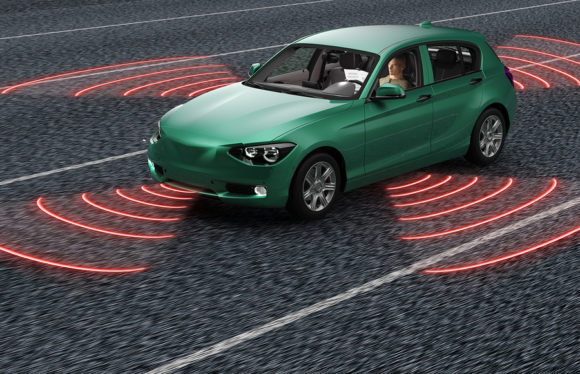The U.S. Transportation Department unveiled a new policy that permits companies developing autonomous vehicles to self-police the technology’s safety, a move that drew plaudits from automakers but criticism from safety advocates.
Transportation Secretary Elaine Chao said the policy incorporates concerns raised by companies and others about initial guidance released by the Obama administration and will help the National Highway Traffic Safety Administration be flexible as self-driving vehicles develop.
Chao said the voluntary guidelines are appropriate to support the technology that she said has the potential to reduce the more than 30,000 traffic fatalities in the U.S. each year and boost the economy by saving fuel and cutting time spent in traffic.
“Safety is a primary concern of the department’s automated vehicle policy,” Chao said in remarks at an autonomous vehicle testing site in Michigan. “NHTSA will continue to exercise its defect, recall and enforcement authority, where appropriate, but the benefits of automated vehicle systems extend beyond safety.”
Self-Assessment
NHTSA officials said the new policy asks companies to self-assess how they’re approaching self-driving safety using 12 subjects identified in the guidance and releasing it to the public on a voluntary basis. That’s a shift from the Obama administration’s approach, which called on companies to provide those assessments to NHTSA. Both approaches are voluntary, yet the Obama proposal sparked industry concerns that safety regulators may limit introduction of the technology.
Other changes include clarifying that companies don’t need federal approval to test or deploy automated vehicles. The policy also applies to self-driving driving systems that require no human intervention while the automated system is in control, but does not cover so-called Level 2 driver-assist systems that need drivers to pay attention, as was the case in the Obama policy.
Jason Levine, executive director of the Center for Auto Safety, an independent watchdog group, said the Trump administration’s changes weakened the original policy.
“The potential for successful deployment of the lifesaving technology that autonomous and automated vehicles can bring is at risk because this administration is choosing to provide no real guardrails to promote safety over shareholders,” Levine said.
State Patchwork
The guidance was praised by automakers and industry groups who have called for federal authorities to assert a stronger role in self-driving vehicle policy to counteract an emerging patchwork of state rules.
“This federal guidance is helpful in advancing road safety and safe testing, while also providing more clarity on the role of state,” the Alliance of Automobile Manufacturers said in a statement. “The guidance provides the right balance, allowing emerging innovations to thrive while government still keeps a watchful eye over new developments.”
Safety and consumer advocates responded Tuesday by criticizing the new approach for being too hands-off.
“This isn’t a vision for safety,” John Simpson, director of Consumer Watchdog’s Privacy Project, said in a statement. “It’s a roadmap that allows manufacturers to do whatever they want, wherever and whenever they want, turning our roads into private laboratories for robot cars with no regard for our safety.”
Topics Auto
Was this article valuable?
Here are more articles you may enjoy.



 Investment Funds File New Suits Over Lighthouse Insurance Collapse in 2022
Investment Funds File New Suits Over Lighthouse Insurance Collapse in 2022  Dubai Floods Expose Weaknesses to a Rapidly Changing Climate
Dubai Floods Expose Weaknesses to a Rapidly Changing Climate  JPMorgan Client Who Lost $50 Million Fortune Faces Court Setback
JPMorgan Client Who Lost $50 Million Fortune Faces Court Setback  North Carolina Adjuster and Son Charged With Embezzlement in Roof Jobs
North Carolina Adjuster and Son Charged With Embezzlement in Roof Jobs 

